使用SpringSecurityOAuth2默认实现OAuth2授权示例
本文记录一下使用SpringSecurityOAuth2实现授权的步骤。
1、相关知识
OAuth协议简介:https://www.cnblogs.com/javasl/p/13054133.html
OAuth 2.0官网:https://oauth.net/2/
2、构建项目
本文使用的springboot版本是2.0.4.RELEASE,不同版本可能会有所区别。下面是主要的配置文件和类:
1)pom依赖
<dependency>
<groupId>org.springframework.boot</groupId>
<artifactId>spring-boot-starter-security</artifactId>
</dependency>
<dependency>
<groupId>org.springframework.security.oauth.boot</groupId>
<artifactId>spring-security-oauth2-autoconfigure</artifactId>
<version>2.1.3.RELEASE</version>
</dependency>
2)application.properties
security.oauth2.client.client-id = MyProject security.oauth2.client.client-secret = MyProject_123 security.oauth2.client.registered-redirect-uri = www.baidu.com
指定应用的ID和秘钥,redirect-uri暂时没用到,但必须有,否则无法演示授权效果。
3)主配置类
@EnableWebSecurity @Configuration public class WebSecurityConfig extends WebSecurityConfigurerAdapter{ @Override protected void configure(HttpSecurity http) throws Exception { http.httpBasic().and().csrf().disable(); } @Bean public PasswordEncoder passwordEncoder() { return new BCryptPasswordEncoder(); } }
4)用户认证类
@Component public class MyUserDetailsService implements UserDetailsService{ @Autowired private PasswordEncoder passwordEncoder; @Override public UserDetails loadUserByUsername(String username) throws UsernameNotFoundException { System.out.println("登录用户名:"+username); String password = passwordEncoder.encode("123456"); return new User(username,password,true,true,true,true, AuthorityUtils.commaSeparatedStringToAuthorityList("admin,ROLE_USER")); } }
5)认证服务器类
@Configuration @EnableAuthorizationServer public class AuthorizationServerConfig { }
6)启动类
@SpringBootApplication public class App { public static void main(String[] args) { SpringApplication.run(App.class, args); } }
3、OAuth 2.0协议相关参数讲解
登录官网 访问:https://tools.ietf.org/html/rfc6749,里面第4章详解介绍了4种授权模式。
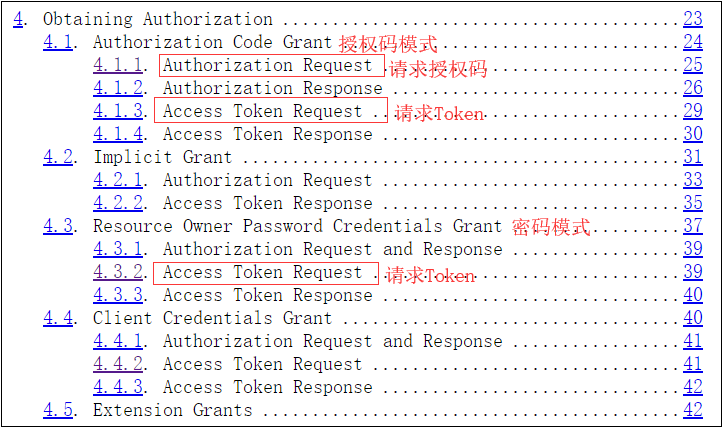
1)授权码模式下,请求授权码所需参数:
response_type:------必填,值是固定的常量code
client_id:-------------必填,值是应用ID,配置文件中定义的MyProject
redirect_uri:---------非必填,值是回调地址
scope:----------------非必填,值是范围
state:-----------------非必填,值是状态
2)授权码模式下,请求Token所需参数:
grant_type:---------必填,值是固定的常量authorization_code
code:----------------必填,值是上面一步请求返回的授权码
redirect_uri:--------必填,值是回调地址
client_id:------------必填,值是应用ID,配置文件中定义的MyProject
3)密码模式下,请求Token所需参数:
grant_type:---------必填,值是固定的常量password
username:----------必填,值是用户名
password:-----------必填,值是用户密码
scope:---------------非必填,范围
4、演示OAuth2授权
启动项目,使用Restlet Client-REST API Testing插件测试
1)测试授权码模式
浏览器输入:http://localhost:8080/oauth/authorize?response_type=code&client_id=MyProject&scope=all
弹出认证页面,输入用户名密码,用户名随意,密码是123456,参考MyUserDetailsService.java。
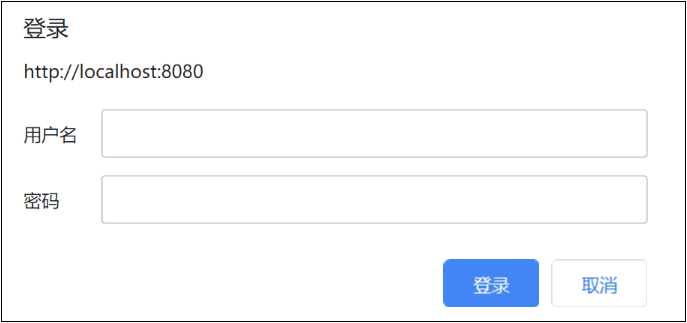
认证成功后,跳转到授权页面。

选择同意授权,跳转到配置的回调url,浏览器中显示:https://www.baidu.com/?code=Q52K1I。其中Q52K1I就是获取的授权码。
使用插件发送POST请求,获取Token
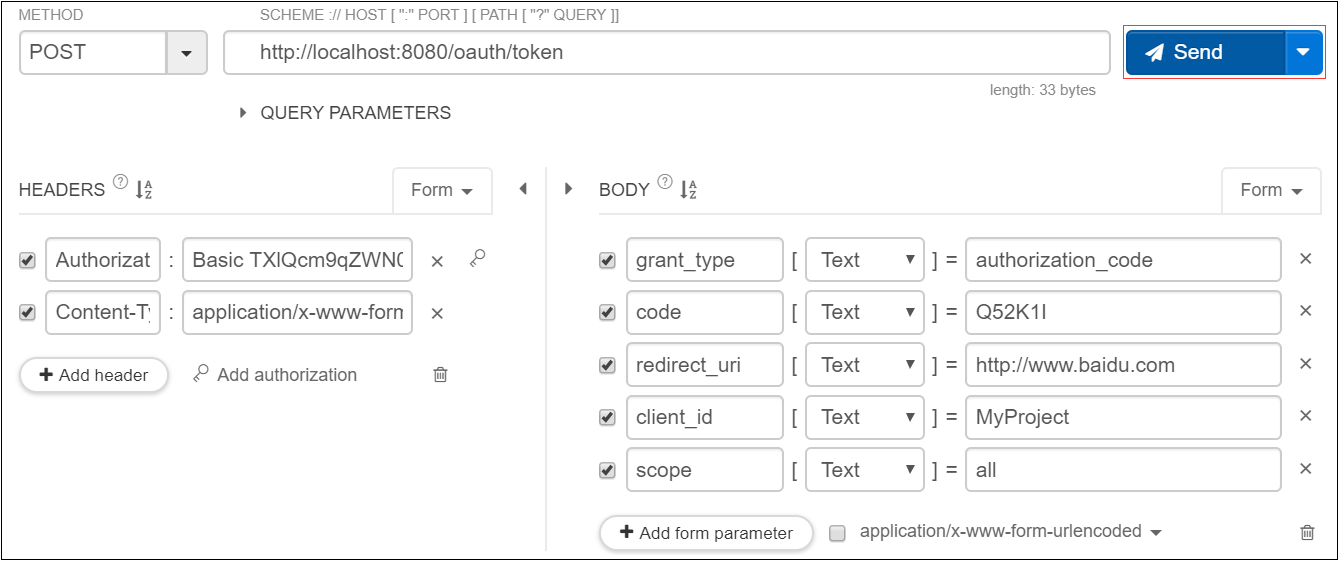
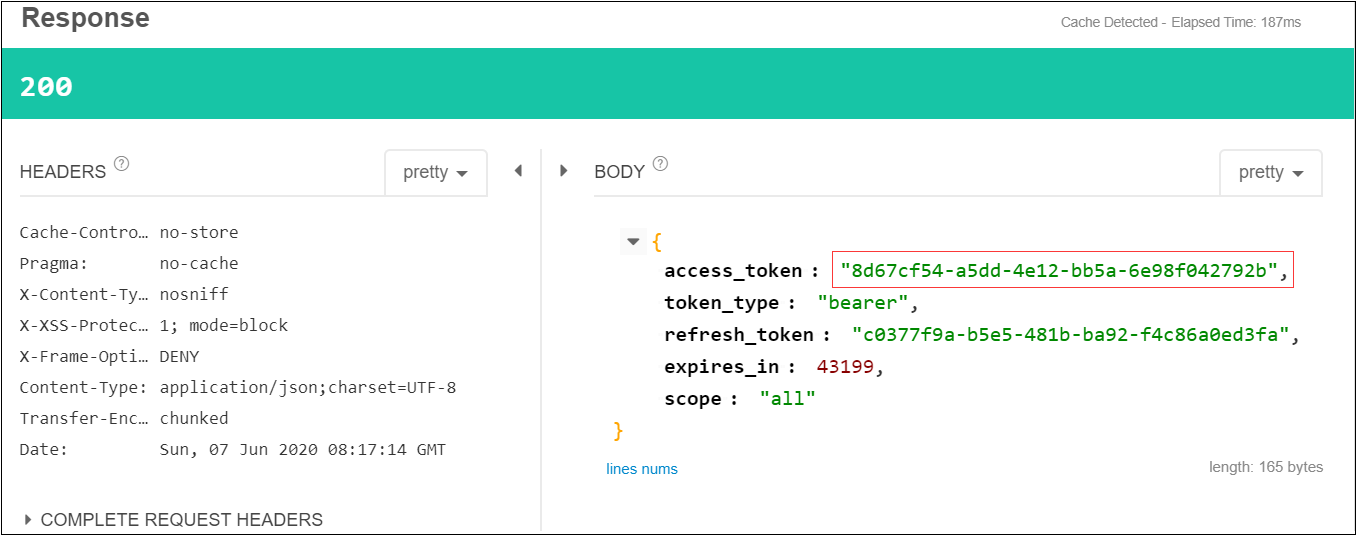
2)测试密码模式
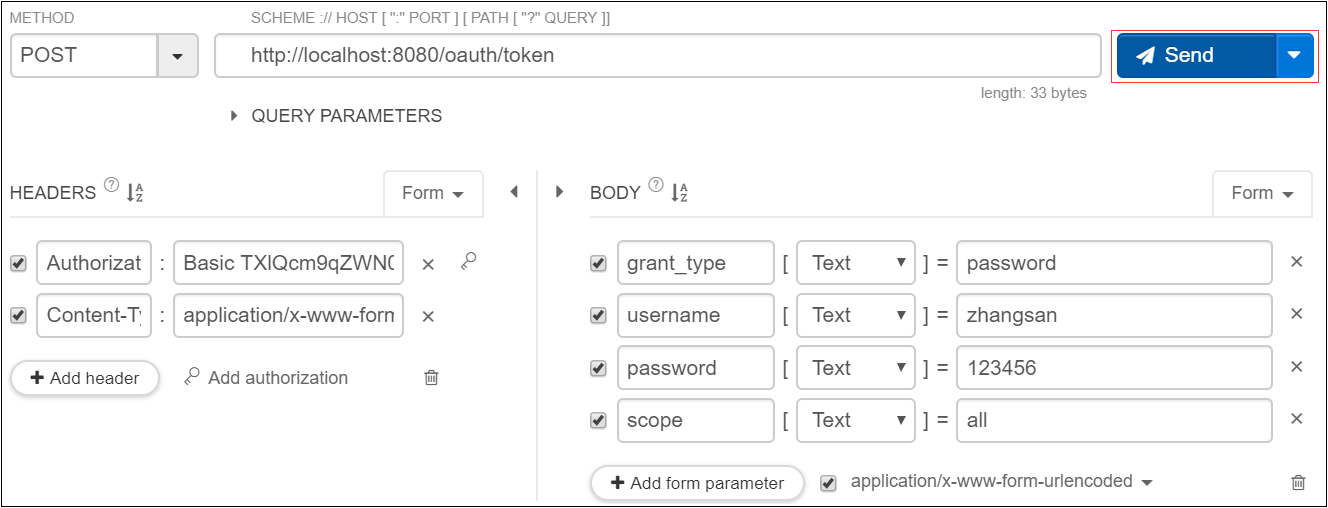
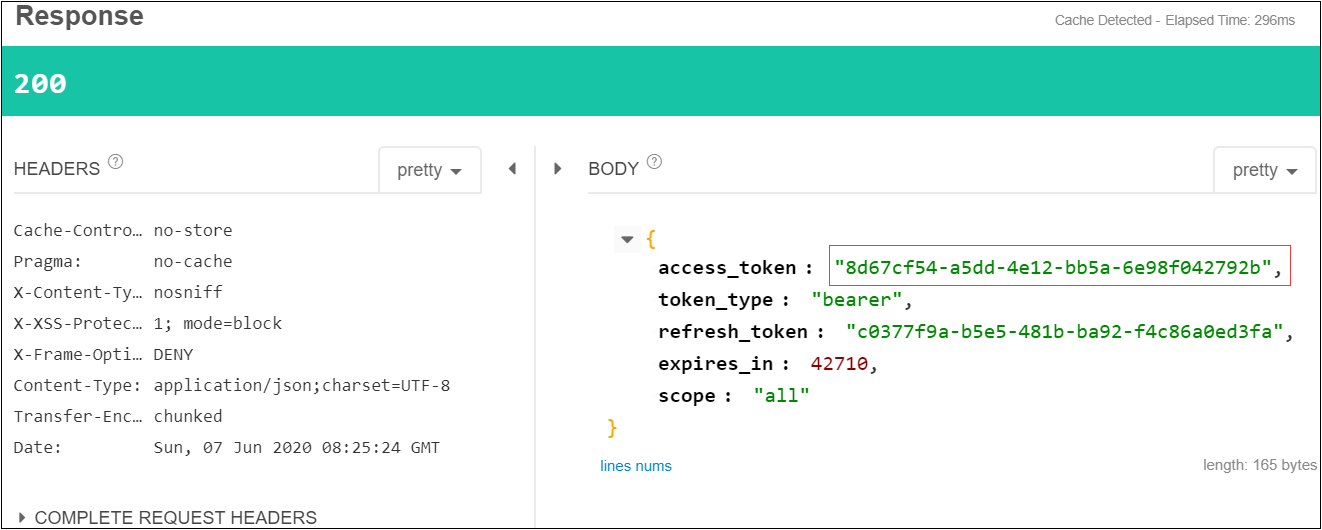
说明:
1)可以看到两种方式获取的Token是一样的,因为同一个用户在系统中已经存在Token了,就不会再创建,直接返回。
2)HEADERS第一个参数Authorization,点击Add authorization创建,弹出如下框,用户名、密码分别是应用的ID和秘钥。
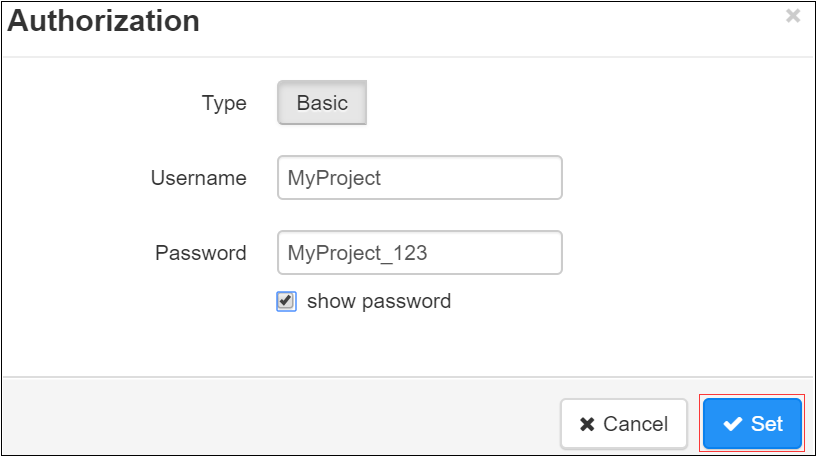
3)HEADERS第二个参数Content-Type,值为application/x-www-form-urlencoded,创建body参数时自动生成的。
5、演示获取资源
1)新增资源服务类
@Configuration @EnableResourceServer public class ResourceServerConfig { }
2)新增测试类
@RestController public class UserController { @GetMapping("/currentUser") public Object getCurrentUser(@AuthenticationPrincipal UserDetails user) { return user; } }
3)启动服务,用密码模式获取Token,如上。

4)访问资源,获取当前用户信息

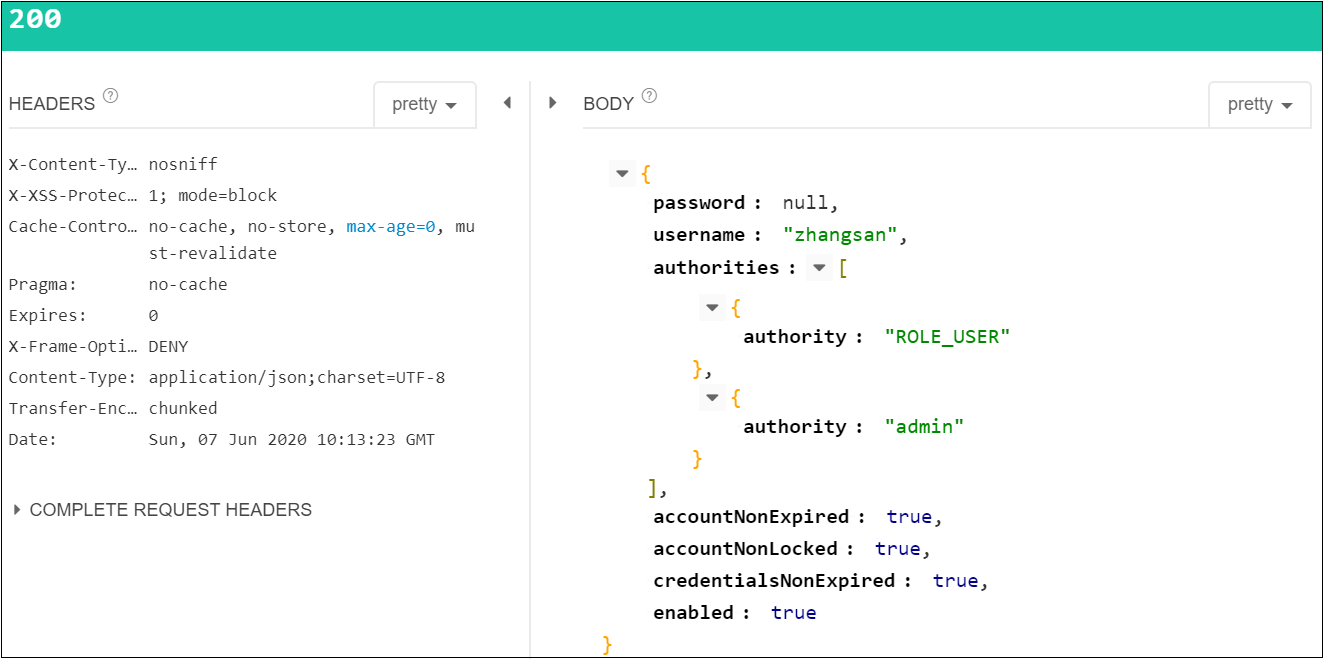
注意:参数名是Authorization,参数值是bearer e9c07170-fb16-4c20-a4cb-71fd623ccffb(token_type + access_token)

